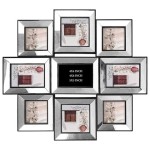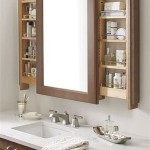How to Mirror Your iPhone to Your MacBook Pro and TV
Mirroring your iPhone's screen to a larger display, whether it's a MacBook Pro or a TV, can be beneficial for various activities, from presentations and demonstrations to enjoying media content with a larger audience. This article outlines multiple methods to achieve this, catering to different setups and preferences.
1. Using AirPlay to Mirror to a MacBook Pro
AirPlay is Apple's proprietary technology designed for wirelessly streaming audio and video content between Apple devices. Leveraging this feature, mirroring an iPhone's screen to a MacBook Pro becomes a straightforward process. Both devices must be connected to the same Wi-Fi network for AirPlay to function correctly.
To initiate screen mirroring, open Control Center on the iPhone. Locate and tap the "Screen Mirroring" icon. A list of available AirPlay receivers will appear. Select your MacBook Pro from the list. The iPhone's screen content will then be mirrored on the MacBook Pro's display.
2. Using AirPlay to Mirror to an Apple TV
Similar to mirroring to a MacBook Pro, AirPlay facilitates seamless mirroring to an Apple TV. Ensure both the iPhone and Apple TV are on the same Wi-Fi network. Access Control Center on the iPhone, tap "Screen Mirroring," and choose your Apple TV from the list of available devices. The iPhone's display will be replicated on the TV connected to the Apple TV.
3. Mirroring to a Non-Apple TV Using a Lightning Digital AV Adapter
For users who wish to mirror their iPhone to a TV that isn't connected to an Apple TV, a wired connection using a Lightning Digital AV Adapter and an HDMI cable provides a reliable solution. This adapter connects to the iPhone's Lightning port and provides an HDMI output to connect to the TV.
Connect the Lightning Digital AV Adapter to your iPhone. Connect an HDMI cable to the adapter and then to an available HDMI port on your TV. Switch your TV's input to the HDMI port connected to the adapter. The iPhone's screen will be mirrored on the TV.
4. Using Third-Party Screen Mirroring Apps for Non-Apple TVs
Several third-party apps available on the App Store offer screen mirroring functionality for non-Apple TVs. These apps typically require both the iPhone and the TV to be connected to the same Wi-Fi network and may offer additional features beyond basic screen mirroring.
Research and choose a reputable screen mirroring app from the App Store. Download and install the app on your iPhone. Follow the app's instructions to connect your iPhone and TV. These instructions typically involve selecting the TV from a list of available devices within the app.
5. Utilizing QuickTime Player on a MacBook Pro for Screen Recording
While not strictly screen mirroring, QuickTime Player on a MacBook Pro offers the capability to display and record an iPhone's screen. This method is particularly useful for demonstrations, presentations, or creating screen recordings.
Connect the iPhone to the MacBook Pro using a USB cable. Open QuickTime Player on the MacBook Pro. Go to File > New Movie Recording. Click the dropdown arrow next to the record button and select your iPhone as the camera and microphone input. The iPhone's screen will be displayed in QuickTime Player, and you can choose to record the screen content.
6. Troubleshooting Common Mirroring Issues
Occasionally, users might encounter problems during the mirroring process. Common issues include network connectivity problems, outdated software, and compatibility issues between devices.
Ensure both the sending device (iPhone) and the receiving device (MacBook Pro, Apple TV, or TV) are connected to the same Wi-Fi network and that the network is functioning correctly. Verify that both devices are running the latest versions of their respective operating systems. If using third-party apps, ensure the app is compatible with both the iPhone and the receiving device. Restarting both devices can often resolve minor glitches.
7. Considerations for Wireless vs. Wired Mirroring
Choosing between wireless and wired mirroring depends largely on the specific use case and the available equipment. Wireless mirroring via AirPlay offers convenience and freedom from cables, but can be susceptible to network interference. Wired mirroring via a Lightning Digital AV Adapter guarantees a stable connection and minimal latency, making it suitable for activities requiring precise timing, such as gaming or high-quality video playback, but limits mobility.
Consider the environment and the type of content being mirrored when deciding between wireless and wired solutions. For casual media consumption, wireless methods often suffice. For professional presentations or scenarios requiring high fidelity, wired connections are generally recommended.

How To Use Apple Airplay Mirror Your Iphone Mac Screen On Tv Roku And More Cnet

How To Use Apple Airplay Mirror Your Iphone Mac Screen On Tv Roku And More Cnet

2024 How To Mirror Iphone Display Mac Ios 14 And Big Sur

How To Airplay From Iphone Or Ipad Mac 9to5mac

Use Airplay To Stream Or Mirror The Screen Of Your Iphone Ipad Apple Support

Use Airplay To Stream What S On Your Mac An Hdtv Apple Support

How To Mirror Iphone Display Macbook Ios 12 Macos Mojave

How To Screen Mirror Ios 13 Iphone A Mac Or Windows Computer Wirelessly

Use Airplay To Stream Or Mirror The Screen Of Your Iphone Ipad Apple Support

Full Guide Efficiently Mirror Iphone To Macbook Wireless








